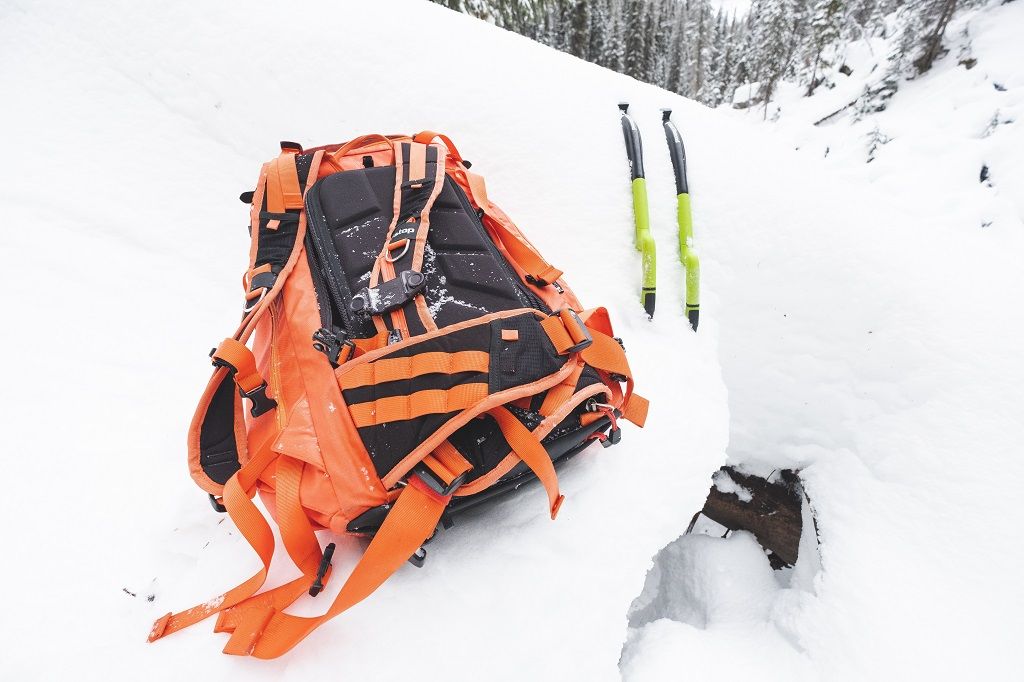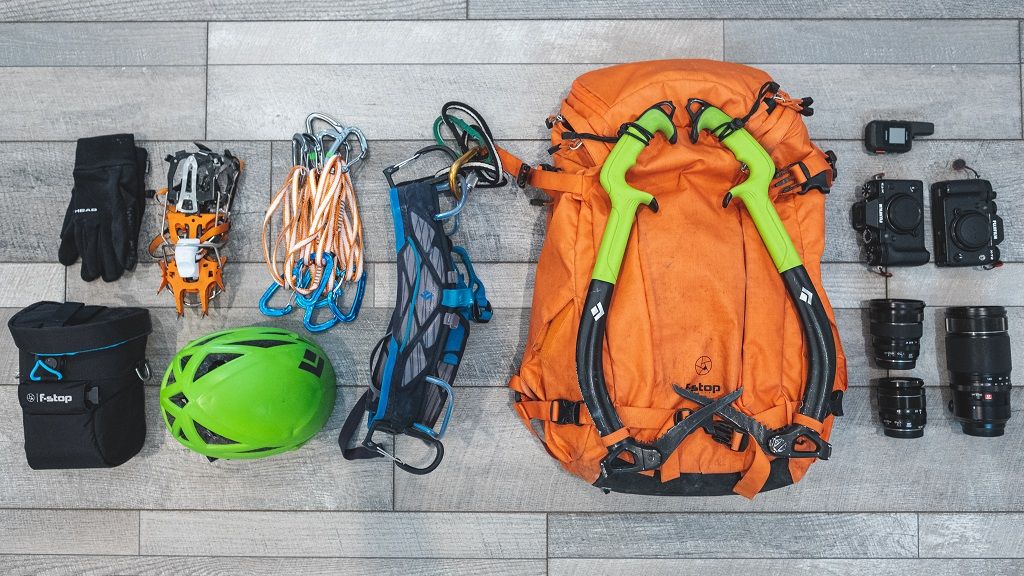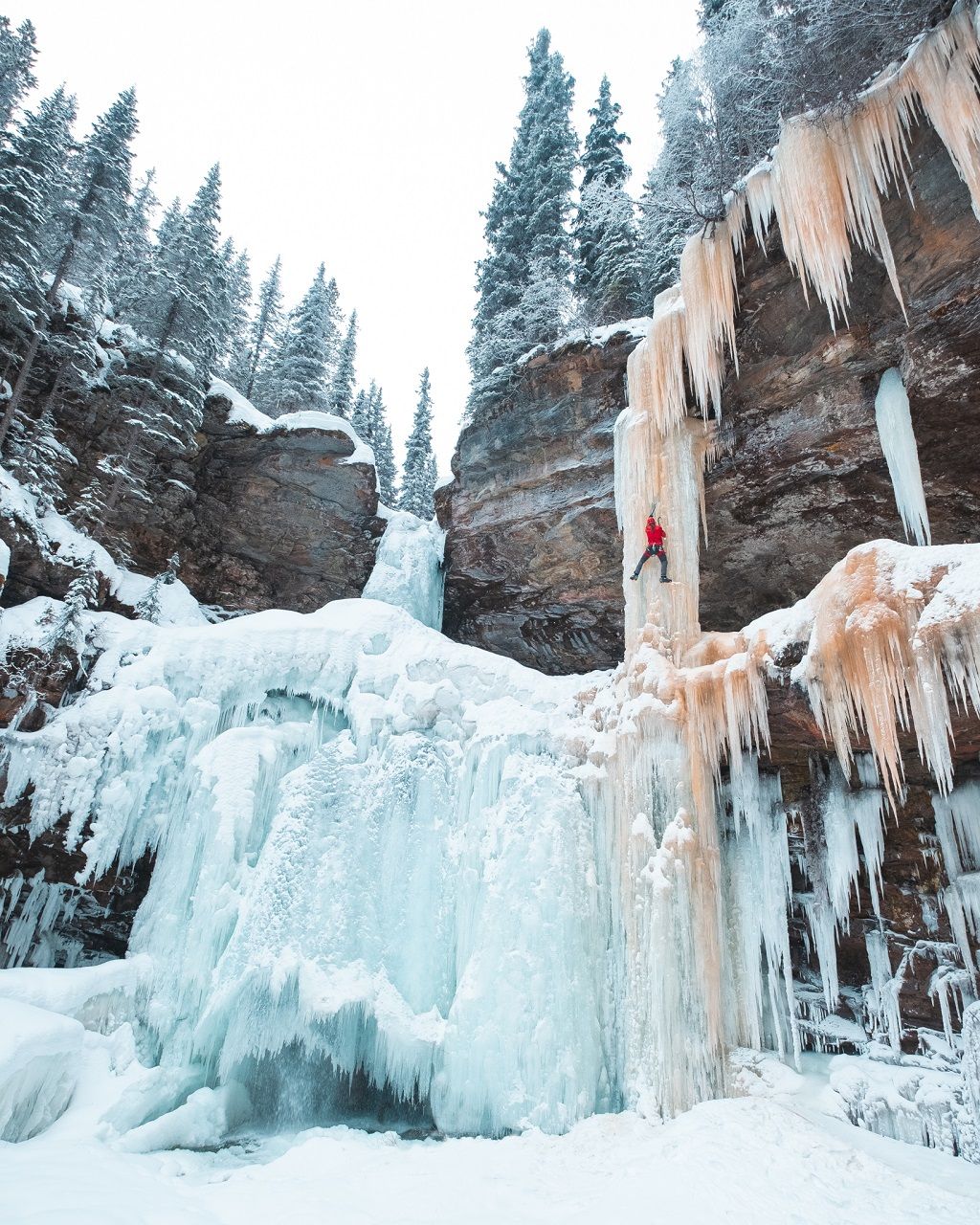PACKING FOR SHOOTING ICE CLIMBING WITH TYLER WEBER
March 2020

EXPLORE f-stop GEAR USED IN THIS STORY:
Packing for a day out on the ice isn’t like packing for your typical day out shooting as there are a couple of extra things to consider before you head out the door. First off I am often hanging from a climb from above so it's important to not only have all the gear I need to shoot in a highly accessible location but it also needs to be safe enough that I won't drop it. In addition to the logistics of the actual shoot, I also need to bring my climbing gear along. These climbs often require the team to hike in on long approaches and so this also requires me to bring adequate food and water for a day out climbing. Logistically this seems like it could be a nightmare but with the use of f-stop packs and the proper ICU’s I have got this pretty dialed in.

First off, I start with my f-stop Ajna bag, I love this bag for so many reasons. First, it's carry-on compatible, I know that’s completely unrelated directly to climbing but this makes for peace of mind when traveling to and from locations, that I don’t have to switch things from one system to another. It really makes for an all in one solution to carrying my camera gear. Second, and most important in this case is the features and the durability of the Ajna. This pack's exterior has attachments for my ice tools that's something you just don't see with a regular camera bag. It's also super tough and weather resistant. The last thing I want to do is be worrying about where to put my camera bag down.The Ajna often ends up in a puddle or under a dripping seep of water and I have yet to encounter any moisture inside the bag itself and this without a rain cover.


Next off is my f-stop Navin. If there’s ever a situation where I am on difficult or highly technical climbs I will go with one camera and one lens and the Navin will get clipped to my climbing harness. This is a lightweight setup that allows me to continue shooting even in the most challenging of situations. When it boils down to ICU’s I usually choose two options and my decision on what ICU to put in the bag goes something like this. If the day of climbing is going to be technically intensive and I need more gear than usual I will opt for the small ICU and only bring one camera body and one lens. But if the day is logistically easy I will pack the medium slope ICU. This allows me to bring two camera bodies and three camera lenses.
When it comes to packing my bag for a typical day out climbing and shooting I bring two bodies, the Fuji XT-3 and the Fuji XT-2. For lenses, I bring the 10-24 f4, 18-55, and 50-140. This allows me to cover all focal lengths without carrying too much bulk. In addition to the basic kit, I also bring 8 extra batteries, a satellite messenger for, for emergencies, extra gloves, and a few hot packs and some warm tea and food for the day. For climbing gear and rigging, I bring my harness, protection in the form of ice screws, and quickdraws, various lengths of slings and webbing and a handful of locking and non-locking carabiners. I also pack my helmet, ice tools, and crampons.
In the ICU itself, I pack all the camera equipment. I have the 10-24 on one camera body and the 50-140 2.8 on the other and the 18-55 sits secured with velcro straps off to the side so I don’t have to worry about dropping it. On top of this, I pack my climbing gear, crampons first because they go on last and then harness, I usually keep most of the climbing gear on my harness as it makes it faster to get going once we reach the climb. Last to go in on top is my helmet as it's the first thing that goes on once we have reached our climb. It's essential to be organized when shooting in these environments, the more ready you are the less you have to worry about the logistics of photography and the more you can focus on climbing and shooting safely.



